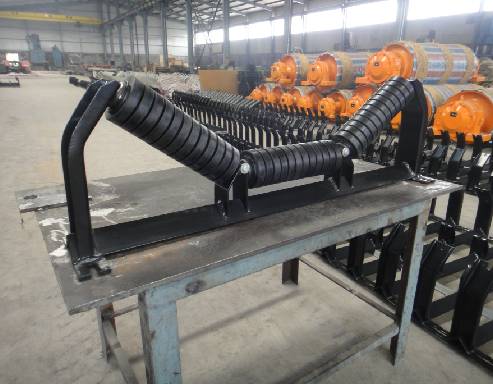 Afrikaans
Afrikaans  Albanian
Albanian  Amharic
Amharic  Arabic
Arabic  Armenian
Armenian  Azerbaijani
Azerbaijani  Basque
Basque  Belarusian
Belarusian  Bengali
Bengali  Bosnian
Bosnian  Bulgarian
Bulgarian  Catalan
Catalan  Cebuano
Cebuano  Corsican
Corsican  Croatian
Croatian  Czech
Czech  Danish
Danish  Dutch
Dutch  English
English  Esperanto
Esperanto  Estonian
Estonian  Finnish
Finnish  French
French  Frisian
Frisian  Galician
Galician  Georgian
Georgian  German
German  Greek
Greek  Gujarati
Gujarati  Haitian Creole
Haitian Creole  hausa
hausa  hawaiian
hawaiian  Hebrew
Hebrew  Hindi
Hindi  Miao
Miao  Hungarian
Hungarian  Icelandic
Icelandic  igbo
igbo  Indonesian
Indonesian  irish
irish  Italian
Italian  Japanese
Japanese  Javanese
Javanese  Kannada
Kannada  kazakh
kazakh  Khmer
Khmer  Rwandese
Rwandese  Korean
Korean  Kurdish
Kurdish  Kyrgyz
Kyrgyz  Lao
Lao  Latin
Latin  Latvian
Latvian  Lithuanian
Lithuanian  Luxembourgish
Luxembourgish  Macedonian
Macedonian  Malgashi
Malgashi  Malay
Malay  Malayalam
Malayalam  Maltese
Maltese  Maori
Maori  Marathi
Marathi  Mongolian
Mongolian  Myanmar
Myanmar  Nepali
Nepali  Norwegian
Norwegian  Norwegian
Norwegian  Occitan
Occitan  Pashto
Pashto  Persian
Persian  Polish
Polish  Portuguese
Portuguese  Punjabi
Punjabi  Romanian
Romanian  Russian
Russian  Samoan
Samoan  Scottish Gaelic
Scottish Gaelic  Serbian
Serbian  Sesotho
Sesotho  Shona
Shona  Sindhi
Sindhi  Sinhala
Sinhala  Slovak
Slovak  Slovenian
Slovenian  Somali
Somali  Spanish
Spanish  Sundanese
Sundanese  Swahili
Swahili  Swedish
Swedish  Tagalog
Tagalog  Tajik
Tajik  Tamil
Tamil  Tatar
Tatar  Telugu
Telugu  Thai
Thai  Turkish
Turkish  Turkmen
Turkmen  Ukrainian
Ukrainian  Urdu
Urdu  Uighur
Uighur  Uzbek
Uzbek  Vietnamese
Vietnamese  Welsh
Welsh  Bantu
Bantu  Yiddish
Yiddish  Yoruba
Yoruba  Zulu
Zulu Belt Tensioner and Idler Solutions for Optimal Drive Performance
Understanding Drive Belt Idlers The Unsung Heroes of Engine Performance
In the intricate world of automotive engineering, the drive belt idler plays a crucial yet often overlooked role. While engine components like the alternator and water pump receive significant attention, the idler serves as a vital link in the overall system's efficiency and functionality. This article explores the significance of drive belt idlers, how they work, and why they deserve more recognition.
What is a Drive Belt Idler?
A drive belt idler is a pulley located along the path of a drive belt, which connects various engine components. Its primary function is to maintain tension in the belt, ensuring that it operates smoothly and efficiently. In a typical setup, the drive belt transfers power from the engine's crankshaft to various accessories such as the alternator, power steering pump, air conditioning compressor, and water pump. The idler also helps to guide the belt around these pulleys and keep it in proper alignment.
How Do Drive Belt Idlers Work?
Drive belt idlers are designed to rotate freely, allowing the belt to move with minimal resistance. They are typically mounted on bearings, facilitating smooth rotation. By tensioning the belt properly, idlers prevent slippage, which can lead to decreased performance and potential damage to engine components. When an engine operates, the drive belt transfers energy efficiently, and the proper functioning of the idler ensures that this process remains uninterrupted.
drive belt idler

Moreover, many modern vehicles use an automatic tensioner, which may include an idler pulley. This system adjusts the tension of the drive belt automatically, compensating for wear and stretch that occurs over time. This adaptability is crucial, as it helps to prolong the lifespan of both the drive belt and the components it powers.
Importance of Drive Belt Idlers
The significance of drive belt idlers cannot be overstated. If an idler fails, it can lead to several critical issues. For instance, a worn or damaged idler may cause the belt to slip or detach, resulting in loss of power to essential engine accessories. This can manifest as a dead battery, overheating due to a non-functional water pump, or loss of steering assistance—issues that can transform a routine drive into a hazardous situation.
Regular maintenance of the drive belt system, including the idler, is essential for proper vehicle operation. Mechanics often recommend inspecting the idler for wear, noise, or misalignment during routine servicing. Signs of trouble may include squeaking sounds, the appearance of cracks on the belt, or visible wobbling of the idler pulley. Addressing these issues early can prevent extensive damage and costly repairs.
Conclusion
In summary, drive belt idlers may not be the most glamorous components of an engine, but they play a vital role in ensuring the smooth operation of essential systems. Understanding the importance of these idlers helps car owners appreciate the intricacies of their vehicle's design and the importance of regular maintenance. By keeping an eye on the health of the drive belt system—including the idler—drivers can ensure their vehicles remain reliable and efficient for years to come.
-
Revolutionizing Conveyor Reliability with Advanced Rubber Lagging PulleysNewsJul.22,2025
-
Powering Precision and Durability with Expert Manufacturers of Conveyor ComponentsNewsJul.22,2025
-
Optimizing Conveyor Systems with Advanced Conveyor AccessoriesNewsJul.22,2025
-
Maximize Conveyor Efficiency with Quality Conveyor Idler PulleysNewsJul.22,2025
-
Future-Proof Your Conveyor System with High-Performance Polyurethane RollerNewsJul.22,2025
-
Driving Efficiency Forward with Quality Idlers and RollersNewsJul.22,2025





























